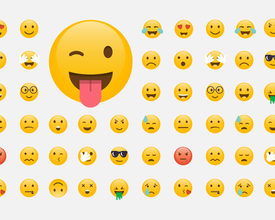Here's something I've learned about events over the years: attendees don't care about perfection. They don't care about perfect venues, Q&A sessions, catering, networking, or tech support. People care about how they feel during an event. That's it. Period.
As Aaron Walter, author of the book Designing for Emotions, notes, "People will forgive shortcomings, follow your lead, and sing your praises if you reward them with positive emotion."
He also highlights that emotional design has the power to transform people into fanatics that are ready to share their positive experiences with others. Walter indicates that emotional experiences are the ones that leave an imprint on the long-term memory.
If you are able to make attendees feel good and comfortable at your event, you are a winner. If not, try again. People won't remember what they ate during the cocktail dinner, but they will remember the overall experience of the evening. The entire idea of planning meaningful and powerful events revolves around invoking positive emotions. As an event manager, it’s your responsibility to place emphasis on the emotional design and how to make your next event better than the previous one.
Hacks on how to use emotional design for your next event
- Emotional design hack #1: Focus on the experience you want to produce
Apart from an event manager, you are an experience designer. Start with mapping the emotions you want the attendees to experience during your event. Do you want them to feel engaged, or more creative? Or maybe your goal is to make them feel relaxed and calm? Your logistic decisions will depend on which emotions you focus.
For example, if you exclude a coffee break between two intense sessions, attendees will feel tired and sleepy; conversely, if you decide to introduce the element of surprise (such as an unexpected performance, physical or virtual incentives, a well-known guest, etc.), you’ll boost your audience's energy and interest level.
- Emotional design hack #2: Apply strategies to engage the attendees
For event managers, it's always a challenge to engage attendees. Engagement means participation, and participation means immersion. When attendees are actively involved, they feel empowered and motivated to give their best and get the most out of an event.
There are multiple strategies to engage attendees: live polls, long Q&A sessions, creative workshop activities, questions from the moderator, icebreaker activities, serious games, surprise quizzes, etc. Engage your attendees as much as possible. They didn’t come to your event to be passive listeners.
- Emotional design hack #3: Introduce fun activities
Take fun seriously. As researcher Ben Fincham notes in The Sociology of Fun, "Fun and happiness are often associated - one being the by-product of the other." The author highlights that fun has the power to define experiences and memories, feed moments with positivity, condition good relationships, and enhance life. If you care about your attendees, help them enjoy their time at your event by introducing fun activities.
- Emotional design hack #4: Create satisfactory conditions for meaningful networking
Networking experiences can be stressful sometimes, especially for introverted attendees. Shy people feel embarrassed and don't know how to break the ice. Good networking conditions, such as fun activities, cozy spaces, calm music, and a relaxed environment will motivate people to move of their comfort zone and push their boundaries.
For the networking session, design an environment in which people will feel good and enjoy themselves. If you do so, attendees will experience a more heightened self-esteem and a lower inner-critical voice. They will feel more confident to interact and socialize with others.
- Emotional design hack #5: Encourage the attendees to co-create the event
Involve your attendees as much as possible. Make them feel part of the event experience. Offer them the possibility to decide which topics will be discussed during the event, or which questions for the speaker are most important. Give them alternatives and options. For example, by letting them decide which workshops or sessions they'd prefer to attend, the attendees will feel like they had a direct say in designing their experience.
Wrap up
Events are about emotions. The emotions attendees experience are a clear indicator of your ability to plan successful events. Keep in mind that you aren’t just an event manager, you are also an experience designer. Whenever you are about to start the work on your next event, ask yourself which emotions you want your event to generate. Then, adjust all the logistical aspects accordingly to create the desired emotional impact.








